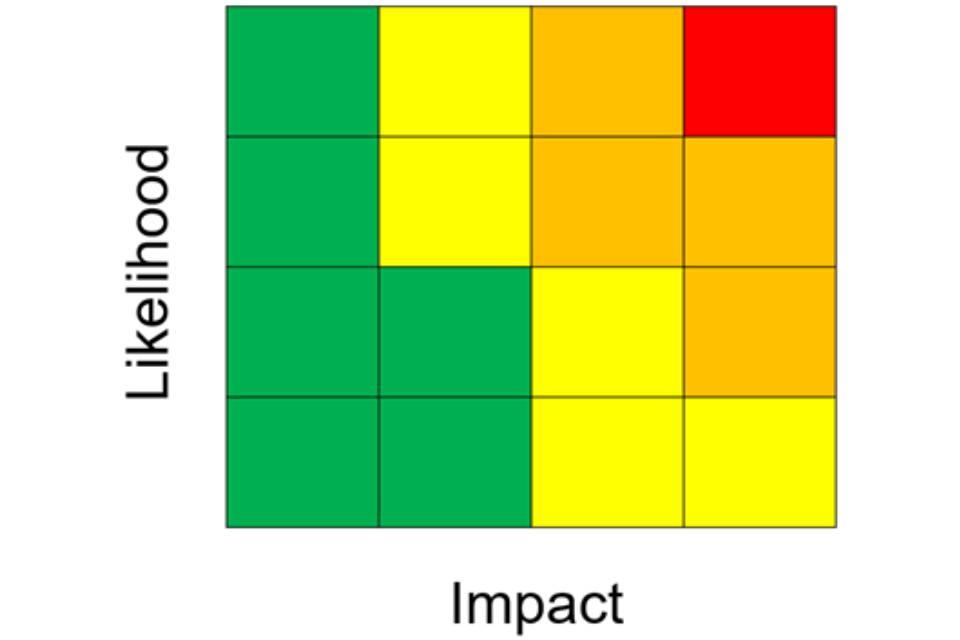Heat-Health Alert action card for national government
This Heat-Health Alert (HHA) action card summarises the suggested actions that the national government should consider at each Heat-Health Alert level.
Applies to England
CCHS navigation menu:
CCHS homepage
Topic: climate-related hazards
Hazard: all climate-related hazards, heat
Part of: summary - Heat-Health Alerting system
Who this action card is for
This Heat-Health Alert (HHA) action card summarises the suggested actions that national government, for example NHS England, UK Health Security Agency (UKHSA), Department of Health and Social Care (DHSC), Met Office, Cabinet Office, Local 바카라 사이트 Association (LGA), other government departments should consider to prepare for and respond to each╠řHHA╠řalert type:
- actions to consider╠řall year round╠řto support summer preparedness
- actions to consider for╠řpre-summer readiness╠řand summer preparedness
- actions to consider for a╠řyellow alert
- actions to consider for an╠řamber alert
- actions to consider for a╠řred alert
The actions are illustrative and organisations including the NHS, local authorities, Local Health Resilience Partnerships (LHRPs) and Local Resilience Forums (LRFs) should ensure that local plans are developed and in place for the coming summer as part of wider preparedness and response to extreme heat events.
Other resources
Sector specific and more detailed guidance can be found on 바카라 사이트:
- Hot weather and health: supporting vulnerable people
- Hot weather advice: planning events and mass gatherings
- Beat the heat╠ř▓Á│▄ż▒╗ň▓╣▓ď│Ž▒
- Weather-Health Alerting System: user guide
┤í▓˙┤ă│▄│┘╠řHHA╠řaction cards
░Ň│ˇ▒╠řHHA╠řaction cards have been updated to reflect the╠řnew impact-based╠řHHA╠řwarning systems, which have been developed in tandem with the╠řAdverse Weather and Health Plan (AWHP). ░Ň│ˇ▒╠řAWHP,╠řHHA╠řaction cards and associated documents provide a broad framework for action, and local areas and organisations need to tailor these good practice suggestions to their local needs and ensure that these fit with wider local arrangements.╠řHHAs╠řshould trigger a series of actions by different organisations and professionals as well as the public, building upon year-round planning activities to ensure hot weather preparedness.
The action cards emphasise the importance of joint working across agencies including the voluntary and community sector, and highlight one of the aims of the plan, which is to ensure that there is an integrated response to severe weather events across sectors. Local areas will need to consider those actions indicated in the relevant section which will need to be taken jointly across organisations and sectors.
The action cards cover the core elements of heat-health action plans recommended by the╠ř:
- longer-term development and planning
- preparation before the summer
- prevention during the summer
- specific responses to hot weather
- monitoring and evaluation
Using the╠řHHA╠řaction cards
In line with other weather warning systems in operation within England (and the UK) warnings will be issued when the weather conditions have the potential to impact the health and wellbeing of the population.╠řThe alerts will be given a colour (yellow, amber or red) based on the combination of the impact the weather conditions could have, and the likelihood of those impacts being realised.╠řThese assessments are made in conjunction with the Met Office when adverse weather conditions are indicated within the forecast.
Yellow and amber alert assessments cover a range of potential impacts (for example impacts on specific vulnerable groups (such as rough sleepers) through to wider impacts on the general population) as well as the likelihood (low to high) of those impacts occurring.╠řThis additional information should aid making decisions about the appropriate level of response during an alert period. Within the alert that is issued, the combination of impact and likelihood will be displayed within a risk matrix as illustrated below.
Once the decision is made to issue an alert (yellow, amber, or red), these will be cascaded to those registered to receive the alerts and made available on the new dedicated web-platform. Alerts will be issued with as much lead time to the event as is possible to allow users time to make their local assessments and to initiate all appropriate actions to reduce harm to health.╠řUsers should review every alert when issued to ensure they fully understand the potential impacts and how likely they are to occur.╠ř
Figure 1. Impact and likelihood risk matrix

Green (summer preparedness)
No alert will be issued as the conditions are likely to have minimal impact and health.╠řHowever, during periods where the risk is minimal it is important that organisations ensure that they have plans in place and are prepared to respond should an alert (yellow, amber, or red) be issued.
Yellow (response)
These alerts cover a range of situations.╠řYellow alerts may be issued during periods of heat in which would be unlikely to impact most people, but those who are particularly vulnerable (for example the elderly with multiple health conditions and on multiple medications) are likely to struggle to cope and where action is required within the health and social care sector specifically.
A yellow alert may also be issued if the confidence in the weather forecast is low, but there could be more significant impacts if the worst-case scenario is realised.╠řIn this situation the alert may be upgraded as the confidence in both the weather forecast and the likelihood of observing those impacts improves.
Amber (enhanced response)
An amber alert would represent a situation in which the expected impacts are likely to be felt across the whole health service, with potential for the whole population to be at risk and where other sectors apart from health may also start to observe impacts, indicating that a coordinated response is required.╠ř In addition, in some circumstances a National Severe Weather Warning Service (NSWWS) Extreme Heat warning may be issued in conjunction and aligned with the╠řUKHSA╠řHHA. This situation would indicate that significant impacts are expected across multiple sectors.
Red (emergency response)
A red alert would indicate significant risk to life for even the healthy population. A red warning would be issued in conjunction with and aligned to a red╠řNSWWS╠řExtreme Heat warning. Severe impacts would be expected across all sectors with a coordinated response essential.
Suggested actions to consider all year round to support summer preparedness
Long-term, strategic actions would seek to address the 9 areas of action outlined in the Adverse Weather and Health Plan (AWHP), as appropriate locally, including:
- service delivery
- capacity building
- organisational arrangements
- communication
- risk management
- early warning systems
- research and data analysis
- quality assurance
- policy development and accountability
Within these 9 areas of action, consideration should be given to:
Longer-term strategies
Work with partner agencies on longer term strategies to include consideration of plans to prepare for and mitigate the impact of hot weather including housing, infrastructure, and environmental action.
Business Continuity Plans (BCPs) and/or hot weather plans
Work with partner agencies,╠řproviders, and businesses to╠řcoordinate╠řBCPs╠řand/or hot weather plans, ensuring╠řvulnerable and marginalised groups╠řare appropriately supported. This may include developing and maintaining a register of the most vulnerable individuals to ensure they can be offered appropriate support where required.
Ensure relevant stakeholders╠řare aware of the╠řBCP╠řand hot weather plans and╠řare engaged in preparing for╠řhot weather.
Workplace champions
Consider identifying individuals to be workplace champions to increase staff awareness of the potential risks of adverse weather and climate change and to encourage staff to embed best practice mitigation against, planning for and responding to adverse weather.
Training plans
Develop a training plan to ensure that staff are aware of╠řBCPs╠řand are engaged in preparing for hot weather.
Data sharing agreements
Ensure appropriate data sharing agreements or protocols are in place to allow organisations to share data or intelligence, including details of the most vulnerable people where appropriate.
Escalation protocols
Review and update escalation protocols to ensure all departments know and understand their role.
Surveillance and monitoring
Ensure surveillance and monitoring systems are in place to enable evaluation of the effectiveness of any hot weather interventions that are established nationally or within relevant sectors. Consider monitoring relevant indicators such as Public Health Outcomes Framework and Adult Social Care Outcome Framework.
Pre-summer readiness and summer preparedness
Figure 2. Impact and likelihood risk matrix: green

Suggested areas you can support preparedness are:
Alerts
Test out and ensure that national and organisational dissemination systems for heat health alerts are fully operational and effective, and that staff understand what actions to take. Review and update relevant distribution lists for information and weather alert cascades.
Audit
Complete an audit of organisational╠řBCPs╠řand/or hot weather plans to ensure that these are up to date, including reviewing╠řAWHP╠řand╠řHHA╠řaction cards to adapt suggestions for local circumstances and ensuring escalation protocols are up to date.
Communication
Work with partner agencies to╠řensure╠řBCP╠řand/or hot weather plans are coordinated across national organisations. Ensure staff are familiar with this action card, any relevant guidance, and your local plans before 1 June each year.
Training
Ensure relevant staff members are aware of and understand╠řBCP╠řand/or hot weather plans, including ensuring relevant staff have received training where applicable.
Suggested actions to consider for a yellow alert
Figure 3. Impact and likelihood risk matrix: yellow alert

Suggested actions once alert is issued:
- a yellow alert will be sent by╠řUKHSA╠řto those registered to receive the alerts and via other information cascades
- preparations are the overall╠řresponsibility of╠řUKHSA; in collaboration╠řwith the Met Office, NHS England,╠řDHSC and local bodies,╠řUKHSA╠řand NHS England will make╠řadvice available to the public and professionals
- UKHSA╠řand Met Office will continue to monitor the weather forecast and undertake dynamic risk assessment considering the likely temperatures and expected impacts and adjust the alert accordingly
- organisations will monitor their own information and intelligence
Suggested actions once alert is in effect:
- central government departments should cascade the alert and other relevant information through their own╠řstakeholder networks and front-line╠řcommunication systems
- UKHSA╠řand Met Office will continue to monitor the weather forecast and undertake dynamic risk assessment considering the likely temperatures and expected impacts and adjust the alert accordingly
- DHSC will ensure other government departments are aware of the change in alert level and can brief ministers as appropriate
- UKHSA╠řwill make advice available to╠řthe public and professionals in╠řaffected regions via the NHS, DHSC (GovNet), and╠řMet Office websites
- NHS England will hold health╠řservices to account for taking╠řappropriate actions to prepare for hot weather
- organisations will monitor their own information and intelligence
Suggested actions to consider for an amber alert
Figure 4. Impact and likelihood risk matrix: amber alert

Suggested actions once alert is issued:
- an amber alert will be sent by the╠řUKHSA╠řto those registered to receive the alerts and via other information cascades
- central government departments should cascade the alert and other relevant information through their own╠řstakeholder networks and front-line╠řcommunication systems
- DHSC will ensure other government departments are aware of the change in alert level and can brief╠řministers as appropriate
- NHS England will hold health╠řservices to account for taking╠řappropriate actions to prepare for hot weather
- organisations to monitor own information and intelligence
- UKHSA╠řand Met Office will continue to monitor the weather forecast and undertake dynamic risk assessment considering the likely temperatures and expected impacts and adjust the alert accordingly
- NHS England will muster mutual aid when requested by local services
- following agreed escalation procedures, the Met Office may issue an amber National Severe Weather Warning (NSWWS) in alignment with an amber╠řHHA╠řfor regions is England
Suggested actions to consider for a red alert
Figure 5. Impact and likelihood risk matrix: red alert

Suggested actions once alert is issued:
- emergency response alert issued at national level in light of cross-government assessment╠řof the weather conditions, coordinated╠řby COBR Unit based in the Cabinet Office
- following agreed escalation procedures, a red╠řHHA╠řand red╠řNSWWS╠řwill be issued for regions in England
- Cabinet Office COBR Unit to consider coordinating asummer resilience network meeting
- all departments and agencies to be prepared to feed into situational awareness as appropriate and coordinated by Cabinet Office
- implementation of national emergency╠řresponse arrangements by central╠řgovernment
Central government response is likely to involve:
- national government departments
- executive agencies
- public sector, including health sector
- voluntary sector
- UKHSA╠řand Met Office will continue to monitor the weather forecast and undertake dynamic risk assessment considering the likely temperatures and expected impacts and adjust the alert accordingly
- Extreme Heat response to consider compounding hazards and how these may hamper the response (for example wildfires and drought)